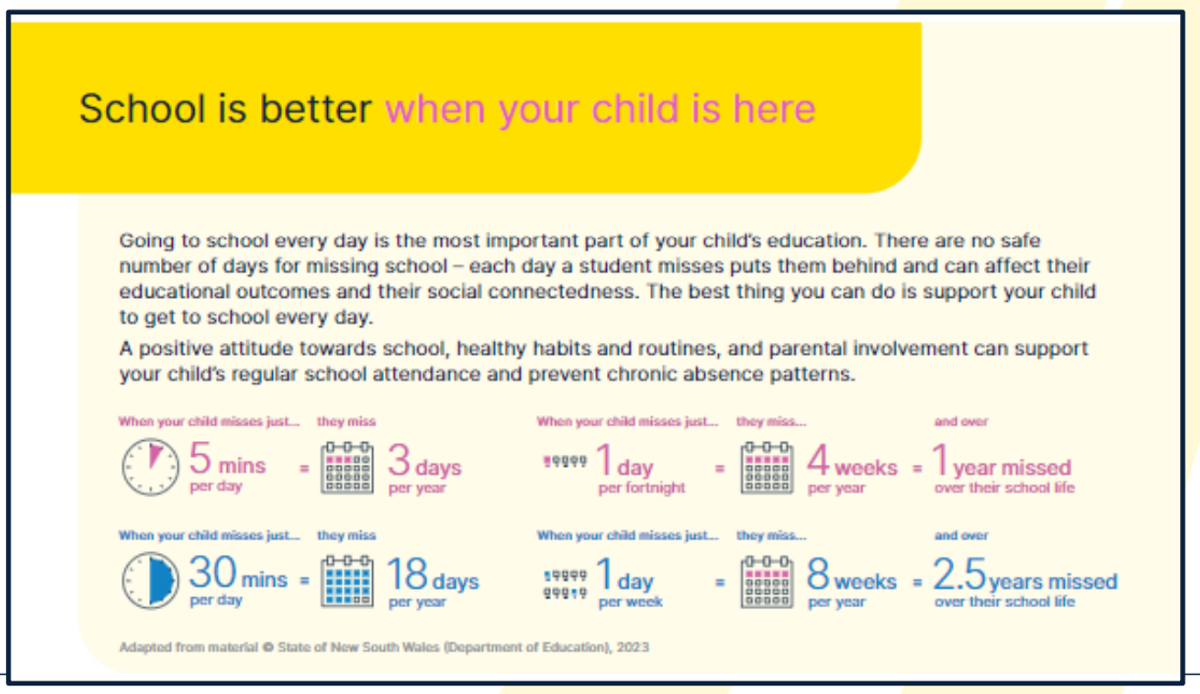How to help your child succeed at school
Attendance

How to help your child succeed at school
Attendance
Daily school attendance is important for all students to succeed in education and to ensure they don't fall behind both socially and developmentally. There is a direct link between school attendance and achievement later in life and students who regularly attend school and complete Year 12 or an equivalent qualification have better health outcomes, better employment outcomes, and higher incomes across their lives. It is important that students develop habits of regular attendance at an early age. Poor patterns in attendance in the early years lead to poor patterns in attendance throughout the school year. It also makes it difficult for students to form positive relationships with their peers.
Higher levels of education are associated with increased likelihood of being employed, being in good health and reporting life satisfaction (OECD 2016a, 2018).
Students are expected to attend the school in which they are enrolled, during normal school hours every day of each term. On a daily basis, absences tend to be short (less than 1 hour) or for the whole day.
0-6 days: This is within the normal range. A child with this attendance rate is able to take full advantage of the teaching and learning opportunities available to them.
7-10 days: This attendance rate is below average. A child with this attendance rate could miss over 1 year of schooling between Prep and Year 10.
11-20 days: This is a poor attendance rate. A child with this attendance rate could miss out on up to 2 years of schooling between Prep and Year 10.
20+ days: This is a very poor attendance rate. A child with this attendance rate could miss out on up to 2.5 years of schooling between Prep and Year 10.


Laura Leung
Teaching and Learning, Numeracy and Literacy Leader